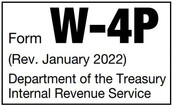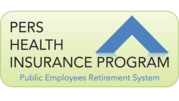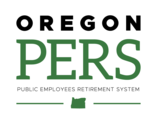|
DECEMBER 2022
 2022 virtual Expo offers retirement guidance
More than 5,200 public employees explored this year’s PERS Expo, learning more about their PERS benefits to help them prepare for a secure retirement.
Expo was again offered as an online-only event and provided members with live, interactive, and on-demand presentations and question-and-answer sessions.
Expo was launched in October, with live sessions presented October 5 and 6. If you were unable to attend in October, expo resources and recordings are still available to explore online through December 31, 2022.
Expo’s offerings include:
- Checklists of key steps to take to help create a secure retirement.
- Overviews of PERS retirement plans — Tier One, Tier Two, and Oregon Public Service Retirement Plan (OPSRP). Overview presentations include one for public employees in their first five years of PERS-qualifying employment.
- Options for extra retirement savings beyond PERS, including Oregon Savings Growth Plan (OSGP) and its advantages.
- Health insurance options offered to retirees by PERS Health Insurance Program.
- Various recorded PERS and OSGP presentations.
The goals of this year’s virtual expo remained the same as always: to help members better understand their PERS benefits and plan for a secure financial future.
|
|
2022 member annual statements to arrive in May
As year’s end approaches, you may wonder when you will receive your next member annual statement. Your 2022 statement will be mailed by the end of May 2023 and will reflect data submitted by your employer as of December 31, 2022.
It takes that long to prepare your statement for two reasons:
- The PERS Board must adopt final earnings crediting before statements can be finalized. In 2023, the board will vote on adoption on April 3.
- PERS must painstakingly check the accuracy of contribution information received from more than 900 employers regarding thousands of member accounts.
While you wait, explore our Member Annual Statement FAQs webpage, which includes interactive examples and information to help you understand your statement. Also, check that your address is correct through your Online Member Services (OMS) account. If you need to change it, contact your employer to have it updated in the PERS reporting system. If you are not currently working for a PERS-participating employer, you can change your address yourself in OMS. Make any necessary changes as soon as possible.
To receive alerts about annual statements, sign up for GovDelivery emails from PERS. If you have questions, contact Member Services.
|
|
Applying for retirement? Read about W-4P tax forms

Are you ready to retire and working on your PERS retirement application? Among the forms you will need to complete is one from the IRS called a W-4P. This form is used to declare tax withholdings from pension and annuity payments.
The IRS revised its W-4P tax form in January, and PERS began accepting the new form on November 1.
You can find the new W-4P form included in the retirement application packet on the OPSRP Member Forms webpage.
|
|
|
Member satisfaction survey results are in for 2022

Thank you to the more than 6,300 members who took our 2022 member satisfaction survey earlier this year.
Your feedback will be used to help improve our services and how we assist you.
A presentation of survey results is available in the PERS Board’s September meeting packet online. The survey presentation begins on page 44 of the packet.
You also can listen to an audio recording of the full board meeting online.
|
|
|

Naming your beneficiaries and keeping those designations current is a critical part of retirement planning.
Here’s why: If you have not designated a beneficiary prior to your death, PERS will pay your Individual Account Program (IAP) balance to your survivors or estate in this order: your surviving spouse, surviving children in equal shares, or your estate.
Locating next of kin can be challenging and substantially delay payment of your benefits to your survivors. To avoid delays, PERS encourages members to complete and submit beneficiary forms for your IAP account. Submit beneficiary forms directly to PERS; turning them into your employer doesn't count.
For your OPSRP pension, you do not need to designate a beneficiary because this is already set for you by law. If an OPSRP member dies before retirement, the only eligible beneficiaries are a spouse, a same-sex registered domestic partner, or a former spouse or a minor child as directed by court order. Therefore, no pension death benefit will be provided to the survivors of single OPSRP members.
Your spouse or registered domestic partner will receive a monthly death benefit for their lifetime. After January 1, 2022, if you are eligible to retire at the time of your death, the death benefit will be worth 100% of the actuarial value of the pension you would have received in retirement. If you are not eligible to retire when you die, the death benefit will be worth 50% instead. (Read more about retirement eligibility on the PERS website.)
As for your IAP, your beneficiary options vary depending on whether you are married or single. Read the IAP Pre-Retirement Designation of Beneficiary Packet instructions for more information.
If you have designated an IAP beneficiary and die before retirement, PERS will pay your IAP balance to your beneficiary.
Whenever a member dies, the member’s survivors or executor should notify PERS as soon as possible. PERS will request the date of death, city and state where the death occurred, a photocopy of the death certificate, and contact information for the spouse or executor.
Processing death benefits typically can take months. To avoid processing delays, consider keeping your beneficiary designations current.
If you have questions, you can contact PERS at any time, but you may especially want to do this when major life events occur. Major events include marriage, divorce, or the death of a beneficiary.
|
|
|

By Richard Horsford
PERS Chief Financial Officer
The PERS Board is charged with crediting earnings to the various PERS funds each year.
This process begins shortly after the close of a calendar year and finishes near the end of the first quarter of the new year.
Two of the most common questions I am asked is why the various earnings crediting rates differ from the annual earnings as reported by Oregon State Treasury and why those differences vary from fund to fund.
To explore these questions, it is first important to understand that while the PERS Board is responsible for making sure that earnings are credited, Oregon laws and Oregon Administrative Rules (OARs) define how these earnings are to be credited to most funds. The one exception is the Contingency Reserve, which the board has discretion to replenish if the fund balance goes below $50 million.
In addition to the earnings crediting that happens at the end of the year, other fund activities take place throughout the year.
For example, when members retire and/or withdraw their funds during the year, a calculation is done to determine and credit the amount of earnings attributable to their account up to that point.
At the same time, new money is constantly coming into the plan in the form of employer and member contributions. These new funds are deposited throughout the year as they are received and are subject to earnings for only the portion of the year that remains.
The timing of these two factors — member retirements and new employer or member contributions — accounts for most differences between PERS’ effective earnings crediting rates and the earnings reported by Treasury.
Looking at various funds, this tends to be more pronounced in the “younger” funds where the amount of new money being added to the fund is larger (more of the money in the fund is only there for a portion of the year after it is received).
Also, per OAR, PERS deducts administrative expenses from each fund. In 2021, expenses amounted to about 0.1% of fund balances.
In the end, PERS is a complicated retirement system, and applying earnings within it is equally complex. We take this complex process seriously to ensure that earnings for all of our funds are correctly calculated and credited.
|
|
|

If you are about to retire and reviewing your health insurance options, visit the PERS Health Insurance Program (PHIP) website. The website offers information about PHIP eligibility rules; Medicare, non-Medicare, and dental plans; PHIP rates; and answers to other health insurance questions.
Contact PHIP at 1-800-768-7377 or visit the PHIP website for more information.
|
|
|
PERS benefit payments support Oregon’s economy

Oregon PERS paid about $4.43 billion in benefits to retired members or their beneficiaries living in Oregon in 2021. The $4.43 billion figure does not include payments from the Individual Account Program (IAP).
PERS conducts an annual economic impact study to show how benefits paid to PERS retirees support the state’s economy. Funding for PERS retirement benefits comes mostly from investment earnings on contributions previously paid by PERS members and public employers.
The financial impact of PERS benefits is not limited to $4.43 billion. Benefit payments also generate tax revenue and support jobs and related wages.
When adjusted to include tax revenue, jobs and wages, the value of PERS retirement payments to Oregon’s economy grows to $4.83 billion.
Read the full Economic Impact Study 2021 online.
|
|
|

Are you planning to retire in the near future? Don’t wait until the last minute to prepare.
Check out these helpful resources from PERS to get ready:
Also, keep the following important points in mind:
- It can take up to 92 days from your retirement date (not the date of your application submission) for your first pension benefit to be paid.
- Once PERS receives your application, we will review your account information and reconcile data with your employer(s) as needed. Data discrepancies can sometimes cause your finalized benefit amount to differ from benefit estimates you received earlier. Remember that benefit estimates are just that — estimates.
- Filling out your application correctly, checking your personal information in OMS or on your member annual statement, and getting benefit estimates can help you avoid delays in the processing of your application. If you find errors in your personal/account information, contact your employer for corrections.
-
Individual Account Program (IAP) retirement benefits can typically take from 90 to 120 days to process and complete payments or rollovers. Processing is done both by PERS and Voya, which administers IAPs for PERS.
If you have questions, contact Member Services for assistance.
|
|
|
 |
|
You can get alerts on topics that include:
- Member news
- PERS Health Insurance Program
- Legislation affecting members
- PERS Board meetings
- PERS administrative rulemaking
|
|
|
|
Mailing address:
PERS
PO Box 23700
Tigard, OR 97281-3700
Physical address:
11410 SW 68th Parkway Tigard, OR 97223
Phone: 888-320-7377
TTY: 503-603-7766
Phone lines open 8:30 a.m. to 5 p.m. Monday through Friday, except holidays.
|
|
We serve the people of Oregon by administering public employee benefit trusts to pay the right person the right benefit at the right time
Chair: Sadhana Shenoy
Vice Chair: Lawrence Furnstahl
Members: Stephen Buckley, Jardon Jaramillo, and John Scanlan
PERS leadership
Director: Kevin Olineck
Deputy Director: Yvette Elledge-Rhodes
Chief Financial Officer: Richard Horsford
Chief Information Officer: Jordan Masanga
Chief Compliance, Audit, and Risk Officer: Jason Stanley Chief Operations Officer: Sam Paris
For more information contact:
PERS | PHIP | OSGP
|
|
|
Perspectives is published by the Oregon Public Employees Retirement System for the benefit of members and employers. It is emailed three times a year.
|
|
|
|
|